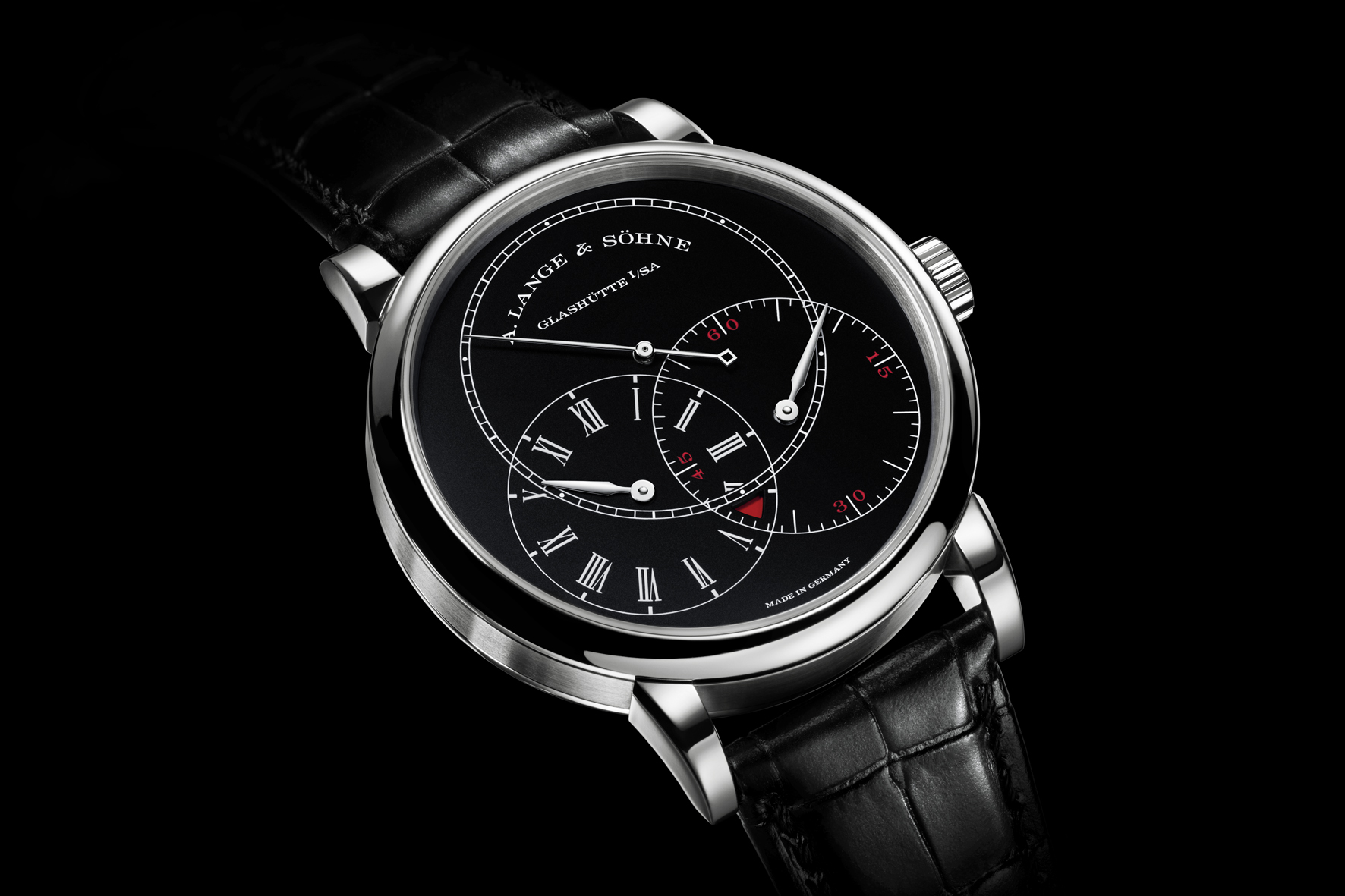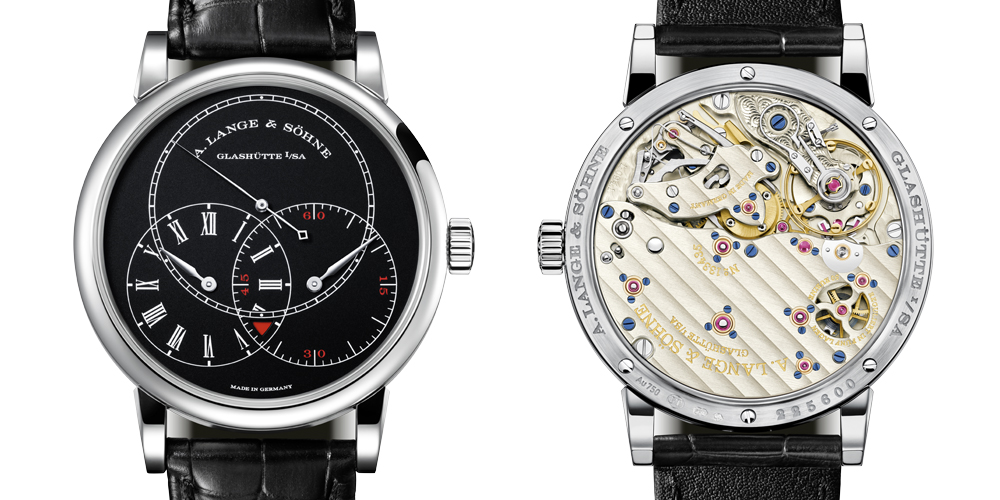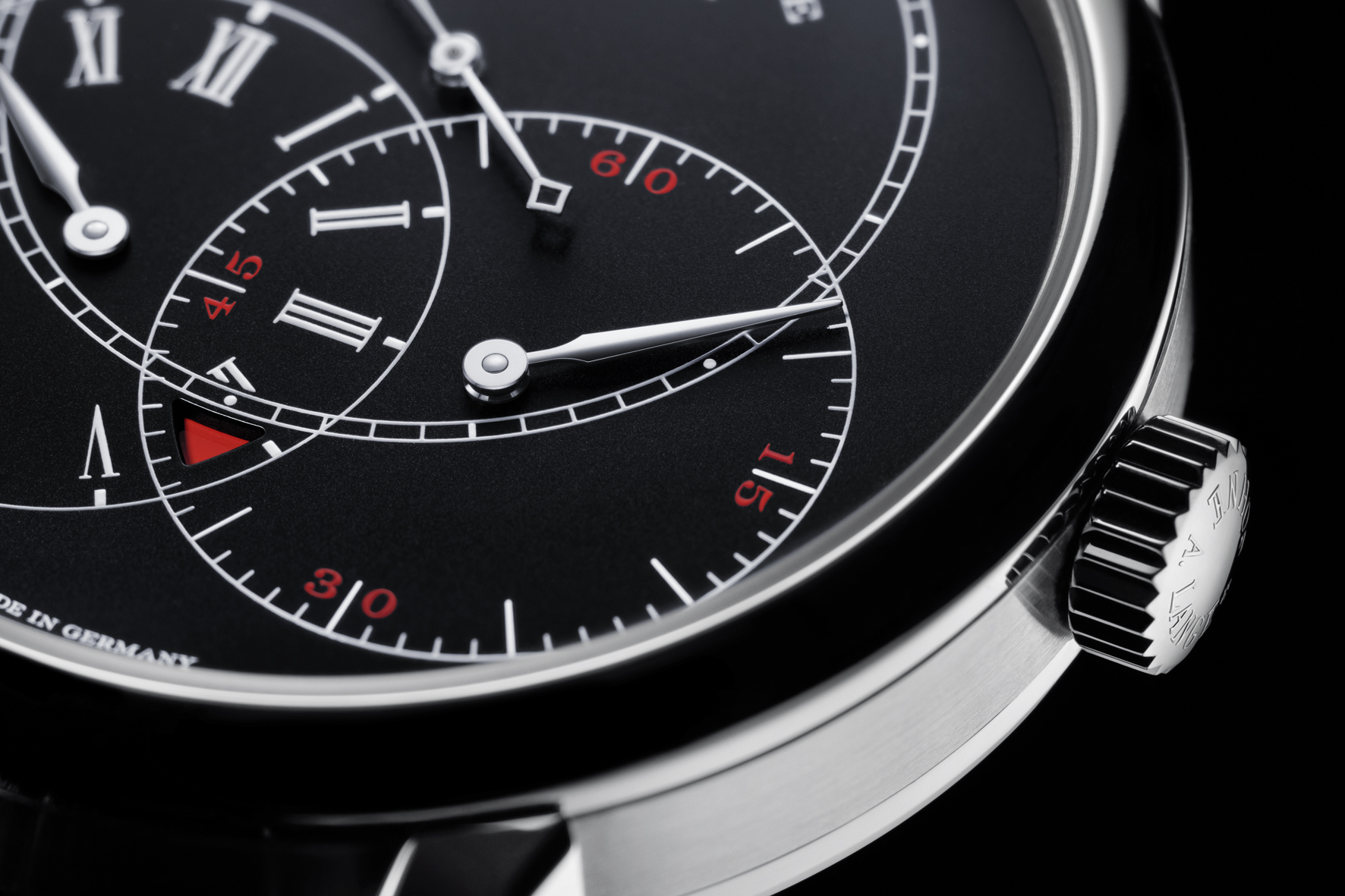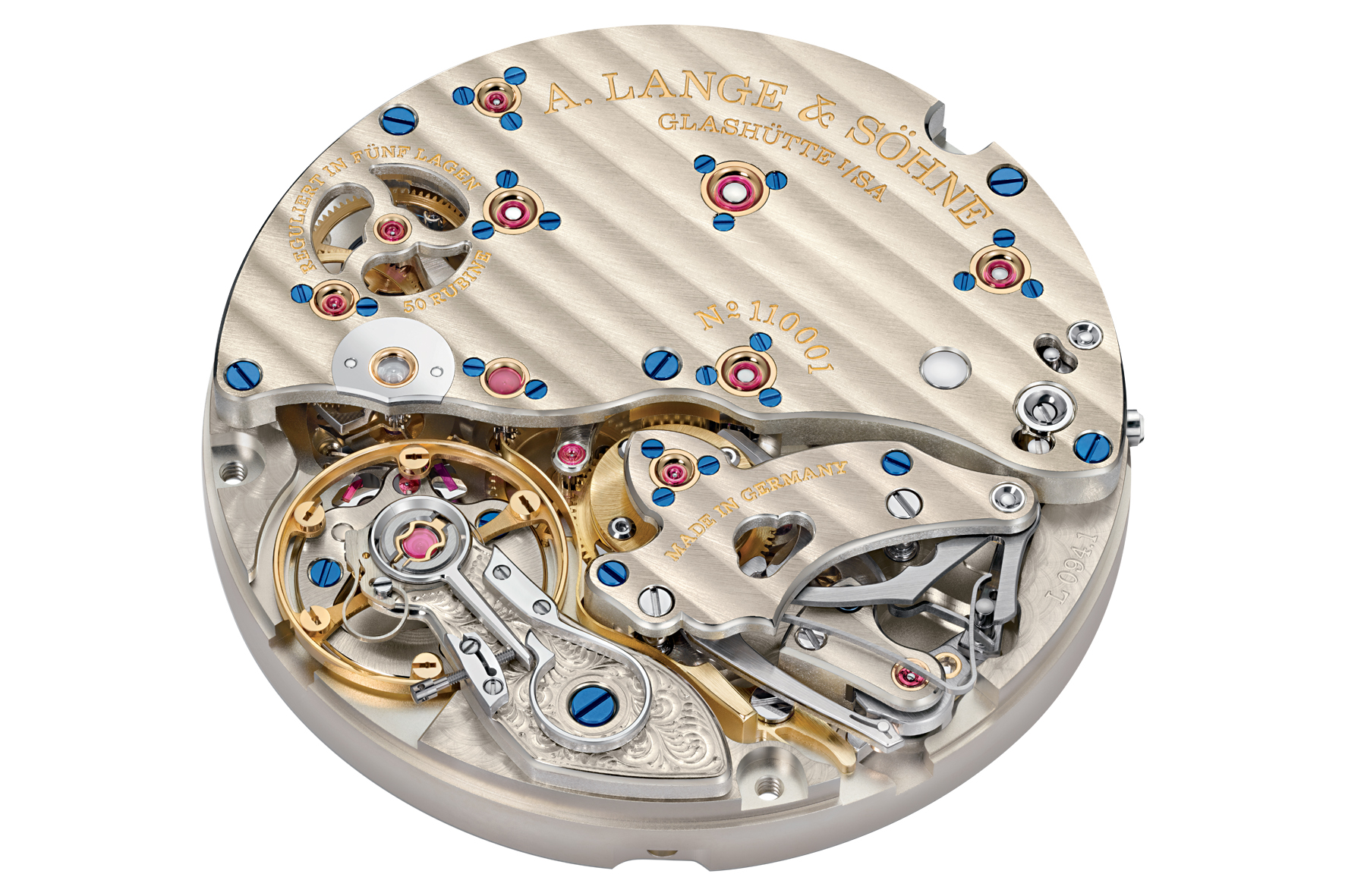A. Lange & Söhne: Richard Lange Jumping Seconds
18 April 2019Ever since it was launched in 2016, Lange’s “first new-era model” with jumping seconds stands out for its regulator dial with the large seconds circle at the top draws the attention to the smallest of the three units of time. The smaller hour and minute circles arranged beneath it are positioned to the left and right.

This year A. Lange & Söhne presents a new version of the Richard Lange Jumping Seconds with black dial and red finishes. Subtlety in colour and the symmetry of the circles recall Bauhaus design concepts while the indication of the time units with three overlapping displays dates back to Dresden-based astronomer and watchmaker Johann Heinrich Seyffert.
On the background of the dial, the hands – in solid gold for the hours and minutes, and in rhodiumed steel for the sweep seconds – stand out prominently. The interplay between contrasting bright and dark colours is echoed by the black alligator leather strap with a white- gold buckle.

Through the sapphire crystal on the back of the 39.9 mm white gold case it’s possible to admire the hand-wound Lange manufacture calibre L094.1, crafted, decorated and assembled by hand. With its unique combination of a constant-force escapement for the seconds, jumping seconds, and zero-reset function, it showcases the key hallmarks of an observation watch: dependability, precision, and clarity. Three complex mechanisms interact to drive the balance with a uniform amount of energy across the maximum power reserve of 42 hours, to advance the seconds hand from marker to marker and to activate the zero-reset function.

The constant-force escapement transforms the gradually declining torque of the mainspring barrel into identical bursts of energy that are delivered to the escapement in one-second intervals. Additionally, switching impulses are generated for the jumping seconds.
When the crown is pulled out, the zero-reset mechanism stops the cam-poised balance wheel, advances the seconds hand to the zero position as in a chronograph, and thus simplifies time setting. For this purpose, the flow of power from the constant-force escapement to the going train must be interrupted. This is done with a proprietary multi-disc clutch. It steadies the seconds hand in its position as it incremen- tally jumps forward, making it possible to reliably block and re-establish the flow of power. (Price €.71.000)

